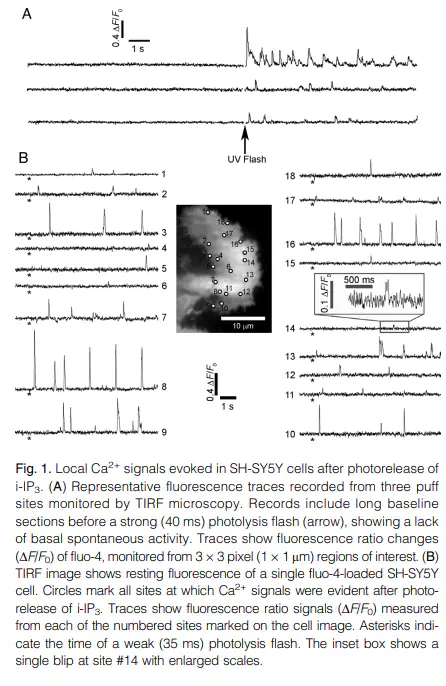Ca2+ Puffs Originate from Preestablished Stable Clusters of Inositol Trisphosphate Receptors

Abstract
Intracellular calcium ion (Ca(2+)) signaling crucially depends on the clustered organization of inositol trisphosphate receptors (IP(3)Rs) in the endoplasmic reticulum (ER) membrane. These ligand-gated ion channels liberate Ca(2+) to generate local signals known as Ca(2+) puffs. We tested the hypothesis that IP(3) itself elicits rapid clustering of IP(3)Rs by using flash photolysis of caged IP(3) in conjunction with high-resolution Ca(2+) imaging to monitor the activity and localization of individual IP(3)Rs within intact mammalian cells. Our results indicate that Ca(2+) puffs arising with latencies as short as 100 to 200 ms after photorelease of IP(3) already involve at least four IP(3)R channels, and that this number does not subsequently grow. Moreover, single active IP(3)Rs show limited mobility, and stochastic simulations suggest that aggregation of IP(3)Rs at puff sites by a diffusional trapping mechanism would require many seconds. We thus conclude that puff sites represent preestablished, stable clusters of IP(3)Rs and that functional IP(3)Rs are not readily diffusible within the ER membrane.